Introduction to Computer Science – Computer Science Form One Notes
The concept of computer science
Computer science is the study of computers, computer systems, and their uses in a variety of areas. Computer science involves creating programs and finding solutions using algorithms, data structures, artificial intelligence, and software engineering. Students may learn to create effective and dependable software programs by grasping the
fundamentals of computing.
Computer science also looks at how we utilize computers to make our lives better by making our everyday activities simpler, quicker, and safer. In our constantly evolving digital environment, this sector has grown in significance.

Computer Science (CS) is the study of computers, computational systems, and the theoretical foundations of information processing. Use of computer in our life is very important. Computer science is evaluated and challenged by humans daily. From Engineers to Doctors, Students, Teachers, government organization they all use it to perform specific tasks, for entertainment, online earnings, and office work. If the uses are for good purposes then it is a blessing for humans.
Computers have made our life easier with the passage of time. With greater quality and accuracy, less time taking computers can do a lot in short time while that task can take a lot of time if we do manually.
You can understand and analyze the importance of computer science by seeing a revolution in offline and online business, online education, online business, online communication and digital banking online games, and most grooming facility online Earnings. Computers have taken industries and businesses to a global level.
They are used at home for online education, entertainment, in offices, in hospitals, private firms, NGOs, Software house, Government Sector Etc. The computer is a very vast field in every sector and everywhere.
BRANCHES OF COMPUTER SCIENCE
Computer science encompasses a wide range of topics, from programming and software development to algorithms and data structures. Here’s a broad overview of some key areas within computer science:
1. Algorithms and Data Structures
Algorithms refer to step-by-step procedures for solving problems or performing tasks. Data Structures are ways to organize and store data efficiently (e.g., arrays, linked lists, trees, and graphs).The goal is to improve efficiency, often in terms of time and space complexity.
2. Software Engineering
This involves the process of creating, testing, and maintaining software applications. Programming Languages (like Python, Java, C++) are used to write code. Software Engineering focuses on designing, building, and maintaining large software systems with an emphasis on reliability, scalability, and performance.
3. Computer Systems and Architecture
Focuses on how computer hardware and software interact. Computer Architecture includes the design of processors, memory systems, and data flow within a machine. Operating Systems (e.g., Windows, Linux, mac OS) manage hardware resources and provide a platform for running software.
4. Artificial Intelligence (AI)
AI involves creating machines that can perform tasks that typically require human intelligence, such as understanding natural language or recognizing images.
5. Computer Networks
Studies the communication between computers over various types of networks (e.g., the internet, local area networks).Includes topics such as network protocols, security, and the design of distributed systems.
6. Cyber security
Focuses on protecting computer systems, networks, and data from unauthorized access, damage, or attacks. Involves encryption, authentication, secure coding practices, and threat detection.
7. Cloud Computing
Refers to the delivery of computing resources (like storage, processing power) over the internet. Includes technologies like virtual machines, containers, and cloud platforms like AWS, Microsoft Azure, and Google Cloud.
8. Quantum Computing
Quantum Computing is a new area that explores computing using quantum-mechanical principles. Block chain is a decentralized technology behind crypto currencies like Bit coin, with applications in security and digital contracts.
9. Data Science
Data science is a branch of applied mathematics and statistics that generates valuable knowledge from massive quantities of complicated data, sometimes known as big data. With the use of computing, data science, also known as data-driven science, integrates elements of several disciplines to evaluate vast amounts of data for use in making decisions.
CAREER PATHS IN COMPUTER SCIENCE
Although these are many number of career options for students of Computer Science, below are a few of the desired options:-
1. Database System Administrator
The system database administrator designs; the database, structure, administers, tests, and executes the system database, preserves the data, performs necessary troubleshooting as needed, and monitors the Database’s overall performance.
2. Programmer
A computer programmer creates operating systems, websites, and mobile applications using programming language codes because coding is an important component of computer science. In the IT industry, qualified programmers are constantly in demand.
3. Data warehouse Analyst
Data Warehouse Analyst is a specific occupation that focuses on managing, gathering, and processing data. Data warehouse analyst’s duties also include assisting the organization in making use of and profiting from the information that is kept there.
4. Software Developer A software developer creates, tests, and uses software and computer applications. They produce software upgrades as well. The applicant, who is sometimes confused with the Software Engineer profile, also assesses the software program for enhancement considering user demands.
5. Research Analyst
The term Research Analyst refers to a position that is responsible for compiling data, conducting surveys and research, and gathering information on-line. A research analyst is employed by a variety of organizations, despite the job title varying.
6. Data Scientist
By analyzing and processing the data and using data modelling for analytical processes, data scientists are responsible for building and maintaining databases that may be used by their organization.
7. Web Developer
The major responsibility of a web developer is to create and test web sites using codes. The website must be backed up, the content must be updated, the design must be changed, and the Interface must be enhanced. Computer science continues to evolve rapidly, driving innovation across industries from healthcare to entertainment to finance.
IMPORTANCE OF STUDYING COMPUTER SCIENCE
You can understand and analyze the importance of computer science by seeing a revolution in offline and online business, online education, online business, online communication and digital banking online games, and most grooming facility online Earnings. Computers have taken industries and businesses to a global level. They are used at home for online education, entertainment, in offices, in hospitals, private firms, NGOs, Software house, Government Sector Etc. The computer is a very vast field in every sector and everywhere.
Here are important reasons why studying computer science is crucial for students:
i. It enable students in Critical Thinking Development: It fosters problem-solving and logical thinking skills that can be applied in everyday life.
ii. Career Opportunities: There is a high demand for computer science professionals in industries like technology, finance, healthcare, and more.
iii. It encourage Innovation and Creativity to the students: the knowledge acquired from studying Computer science encourages creativity by providing the tools to create new software, applications, and technological solutions.
iv. Technological Literacy: It equips students with essential knowledge of how technology works, fostering a deeper understanding of the digital world.
v. Problem-Solving Skills: It trains students to approach complex problems and break them down into manageable tasks.
vi. Global Impact: Technology shapes the world, and students can contribute to solving major global challenges such as climate change, healthcare, and education.
vii. Automation of Tasks: Computer science helps automate repetitive and time-consuming tasks, increasing efficiency in everyday life and work.
viii. Collaboration and Teamwork: Computer science often involves collaborative projects, teaching students teamwork and communication skills.
ix. Increased Adaptability: Students who study computer science become more adaptable to technological advancements, staying relevant in a fast-changing world.
x. Entrepreneurship: It enables students to create and build their own tech startups, products, or services with the skills learned.
xi. Improved Research Skills: Computer science fosters skills in research, data analysis, and the development of computational models for academic or industry research.
xii. Critical for Modern Society: With the increasing reliance on digital technology, computer science knowledge is essential to understanding and engaging in modern society.
xiii. Ethical Awareness: Studying computer science encourages students to consider ethical issues such as privacy, security, and the social implications of technology.
xiv. Continuous Learning: The field of computer science is constantly evolving, teaching students the importance of continuous learning and adaptation.
xv. Technical Skills for Everyday Life: It provides students with practical skills that can improve their personal lives, such as using advanced software tools or troubleshooting tech problems.
xvi. Empowerment in the Digital Age: Studying computer science empowers students to understand, use, and even create the technologies that dominate the modern world.
These reasons highlight why computer science is an essential field of study that equips students with the skills and knowledge needed for personal growth, career success, and contributing to the betterment of society.
RELATIONSHIP BETWEEN COMPUTER SCIENCE AND OTHER FIELDS
Computer science is deeply interconnected with a wide range of other academic disciplines and fields of study. Its influence spans many areas, helping to enhance and revolutionize other subjects through technology, data analysis, and automation.
Here’s a look at the relationships between computer science and several other fields of study today:
1. Mathematics
Algorithm Design: Mathematical principles, such as logic, combinatorics, and number theory, are essential for designing efficient algorithms in computer science. Cryptography: The study of secure communication is rooted in mathematics, especially in number theory and abstract algebra. Cryptography techniques, such as RSA encryption, are based on complex mathematical concepts.
2. Physics
Quantum Computing: The emerging field of quantum computing blends computer science with physics, leveraging quantum mechanics to solve problems that classical computers cannot handle efficiently. Simulation and Modeling: Physics often relies on computer science for simulating physical systems, from the behavior of particles at the quantum level to modeling weather patterns or astrophysical phenomena. Computer Graphics: In fields like physics and engineering, computer science is used for creating simulations and visualizations (e.g., visualizing molecular structures or simulating fluid dynamics).
3. Engineering
Electrical and Electronics Engineering: Computer science is fundamental in the development of embedded systems, circuit design, and the creation of processors and microcontrollers used in various electronic devices.
Mechanical and Civil Engineering: Computer-aided design (CAD) software relies on algorithms and simulation tools from computer science to assist engineers in designing structures, machinery, and infrastructure.
Robotics: The field of robotics merges engineering with computer science, as robots require sophisticated control algorithms, machine learning, and artificial intelligence to operate autonomously.
4. Biology and Medicine
Bioinformatics: The combination of computer science and biology enables the analysis of complex biological data, such as genetic sequences and protein structures, to improve medical research and treatment.
Medical Imaging: Computer science algorithms are used in medical imaging to enhance images (like X-rays or MRIs), identify diseases, and aid in diagnosis.
Computational Biology: Computer models help simulate biological processes, such as the spread of diseases, genetic evolution, or the interaction of cells, offering insights into medicine and drug development.
5. Economics and Finance
Financial Technology (FinTech): Computer science has transformed the finance industry, enabling the development of digital payments, online banking, and crypto currency, among other innovations.
Data Analysis and Predictive Modeling: Economists and financial analysts rely on computational methods to process large amounts of data, create financial models, and predict market trends.
Game Theory: Algorithms from computer science are used to model and solve problems in game theory, which has applications in economics, decision-making, and even politics.
6. Social Sciences
Sociology and Psychology: Computer science is used in social sciences for data collection, analysis, and interpretation, such as using social media data to study human behavior and societal trends.
Artificial Intelligence and Human Behavior: AI and machine learning models are increasingly used to study and replicate human cognition, decision-making, and emotion in areas like psychology and neuroscience.
Behavioral Economics: Computer models are used to simulate economic behavior, understand how individuals make decisions, and predict societal responses to various policies.
7. Geography and Environmental Science
Geographic Information Systems (GIS): Computer science helps create tools to collect, analyze, and visualize geographical and environmental data, aiding in urban planning, climate modeling, and disaster management.
Environmental Modeling: Computers are used to model environmental systems, predict the effects of climate change, and simulate natural phenomena like forest fires or hurricanes.
Remote Sensing: Satellite imagery and data analysis rely heavily on computer algorithms to process and interpret data for environmental monitoring, resource management, and spatial analysis.
8. Arts and Humanities
Digital Arts: Computer science plays a key role in modern art, from graphic design and animation to virtual reality (VR) and interactive media. Artists use tools like Photoshop, Blender, and Unity to create immersive experiences and digital works.
Music and Sound Engineering: Digital sound processing, music composition software, and algorithmic composition all rely on computer science to create and manipulate music.
Digital Humanities: In this interdisciplinary field, computer science is used to analyze historical texts, artifacts, and cultural data to gain new insights into literature, history, and philosophy.
Computer science acts as a foundational bridge between a wide varieties of disciplines. By providing tools, algorithms, and computational models, it enhances our ability to understand complex systems in other fields and leads to new insights, innovations, and solutions across diverse domains. As technology continues to evolve, the relationship between computer science and other subjects will only deepen, fostering even more interdisciplinary collaborations.
APPLICATIONS OF COMPUTER SCIENCE IN DAILY LIFE
Computer science has had an enormous impact on the world today, shaping nearly every aspect of our lives. From how we communicate to how businesses operate, computer science is at the heart of modern society. Here’s an overview of its influence in the present world:
1. Technology and Innovation
Smartphones and Devices: Advances in computer science have led to the development of smartphones, wearable tech, and smart home devices that make our lives more convenient and connected.
These devices rely heavily on software and hardware innovations.Artificial Intelligence (AI) & Machine Learning (ML): AI and ML are transforming industries by automating tasks, improving decision-making, and enabling new capabilities like personalized recommendations, language translation, and autonomous vehicles. For instance, AI powers systems like chatbots, facial recognition, and self-driving cars.
2. Communication and Connectivity
The Internet: The rise of the internet, made possible through advances in computer science, has revolutionized communication. Social media platforms, email, and messaging apps keep people connected across the globe.
Remote Work and Education: With the COVID-19 pandemic, computer science played a pivotal role in enabling remote work and online education. Platforms like Zoom, Microsoft Teams, and Google Classroom rely on cloud computing and video conferencing technology.
Social Media and Content Creation: Social media platforms (Facebook, Instagram, Twitter, TikTok) are driven by complex algorithms that use big data and AI to deliver personalized content, shaping how we interact with information and each other.

3. Business and Economy
E-Commerce and Online Services: Platforms like Amazon, eBay, and Alibaba have transformed how people shop, driven by robust databases, secure online payment systems, and recommendation algorithms.
Financial Technologies (FinTech): Computer science enables innovations in the financial sector, such as online banking, digital wallets, blockchain (cryptocurrencies like Bitcoin), and robo-advisors. These technologies are disrupting traditional banking and investment practices.
Data-Driven Decision Making: Businesses use data analytics, machine learning, and AI to analyze consumer behavior, optimize supply chains, and predict market trends, leading to smarter decisions and greater operational efficiency.

4. Healthcare and Medicine
Medical Imaging and Diagnosis: AI and computer algorithms help in analyzing medical images, identifying patterns in diagnostic data, and supporting doctors in detecting diseases like cancer and heart conditions.
Telemedicine: Advances in telecommunication and digital tools have allowed doctors and patients to connect remotely, making healthcare more accessible, especially in rural or underserved areas. Personalized Medicine: The use of big data and computational models is helping doctors tailor treatments to individual patients based on their genetic information and health history.
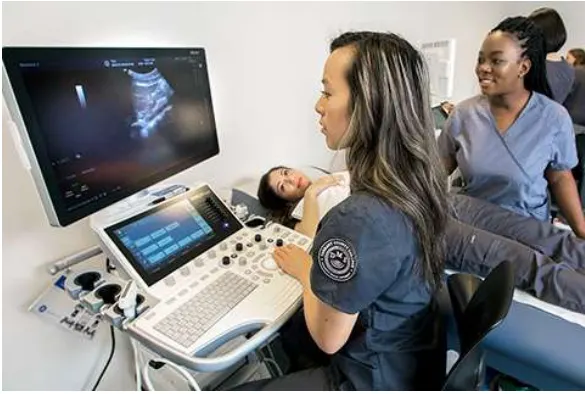
5. Security and Privacy
Cyber security: As more of our lives move online, the need for protecting personal data and online transactions has become critical. Computer science provides the tools for encryption, secure communication, and threat detection to safeguard against cyber-attacks, identity theft, and data breaches.
Digital Privacy: With the rise of data collection, privacy concerns have also become a major issue. Companies and governments are focusing on developing technologies to protect user data and comply with privacy regulations like GDPR.

6. Transportation and Logistics
Autonomous Vehicles: Self-driving cars, drones, and delivery robots use AI and computer vision to navigate and make decisions in real time, promising to revolutionize transportation and logistics industries.
Smart Cities: The integration of computer science into urban planning, through sensors and data analytics, is creating “smart cities” that optimize traffic flow, manage energy consumption, and improve public services

7. Environmental Sustainability
Climate Modeling and Predictions: Computer science plays a key role in climate science by helping model and predict climate changes, providing valuable insights into how we can mitigate the effects of global warming.
Sustainable Technologies: Technologies like renewable energy management, smart grids, and environmental monitoring systems rely on computer science to optimize resource use and reduce waste.
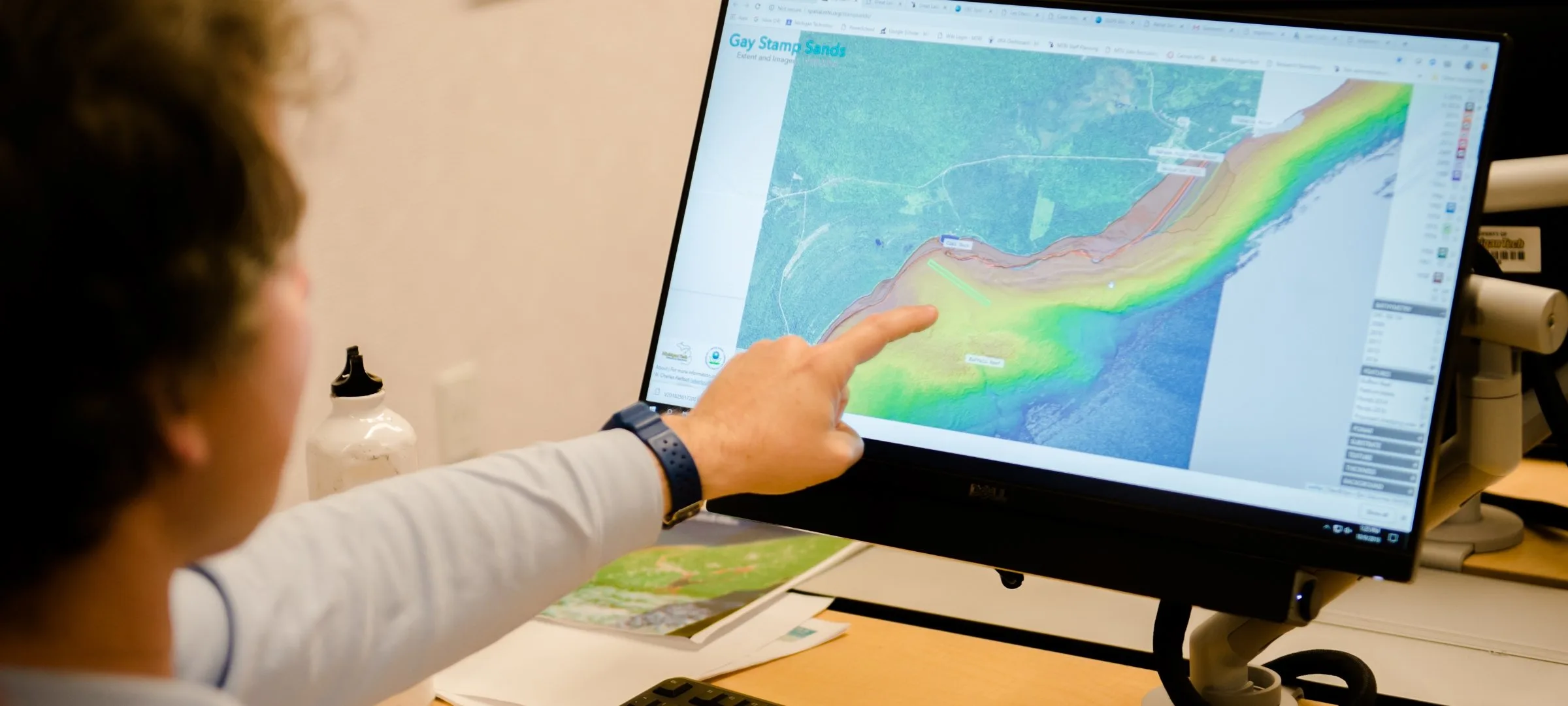
8. Entertainment and Media
Streaming and Digital Content: Platforms like Netflix, Spotify, and YouTube rely on data science, machine

learning, and cloud computing to deliver personalized content and streaming services to users. Gaming and Virtual Reality: The gaming industry has evolved with advances in graphics, AI, and virtual reality (VR), offering immersive experiences. Esports and online gaming have become major global phenomena.
9. Computer Science in Education
Computer science has significant applications in enhancing education through various technologies and tools. Some key applications are:
a) E-Learning Platforms
Learning Management Systems (LMS) like Moodle or Blackboard allow educators to share resources, assign tasks, and track student progress. Online courses and digital classrooms leverage technologies like video streaming, interactive quizzes, and virtual simulations, making learning accessible to a global audience.
b) Artificial Intelligence (AI) and Machine Learning
Personalized learning: AI algorithms can adapt content to suit individual learning styles, helping students learn at their own pace. Smart tutoring systems: AI-powered systems provide personalized tutoring or help students with homework, addressing learning gaps.
c) Simulation and Virtual Reality (VR)
Virtual labs: VR and simulations allow students to conduct experiments in a controlled, virtual environment, enhancing understanding without needing physical resources. Interactive 3D models: VR and AR can bring abstract concepts (like chemistry, biology, or mathematics) to life, providing an immersive learning experience.
d) Educational Games
Computer science aids in the development of educational games that help make learning more engaging and fun while reinforcing key concepts.
e) Collaborative Tools
Cloud-based tools like Google Classroom enable collaboration between students and teachers, allowing for real-time interaction, file sharing, and feedback.
In education, computer science provides tools that enhance learning experiences, personalizes education, and
promotes accessibility, helping students and educators connect and thrive in a digital world.
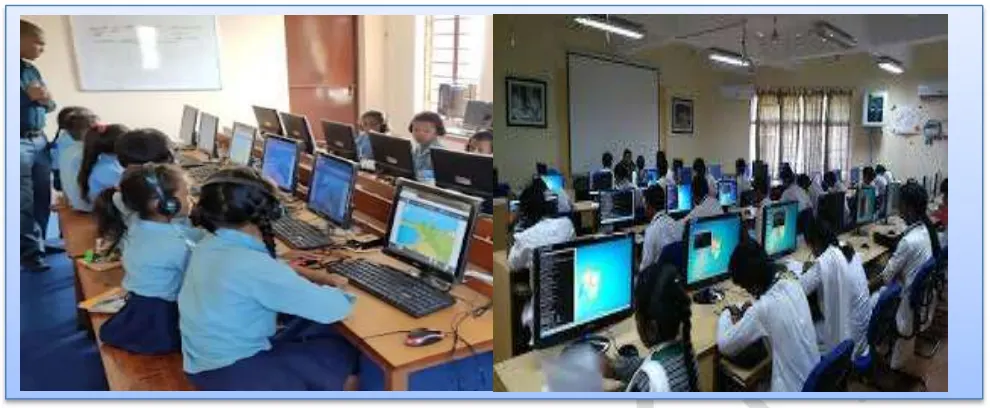
10. Computer Science in Agriculture:
In agriculture, computer science is transforming traditional practices, making farming more efficient and sustainable through advanced technologies. Some key applications are:
a) Precision Agriculture
Sensors and IoT (Internet of Things): Sensors in fields and greenhouses collect data on soil moisture, temperature, humidity, etc. Computer algorithms process this data, helping farmers make informed decisions regarding irrigation, planting, and harvesting.
Drones and UAVs: Drones capture aerial images, monitor crop health, and detect pests, helping farmers monitor large areas quickly and accurately.
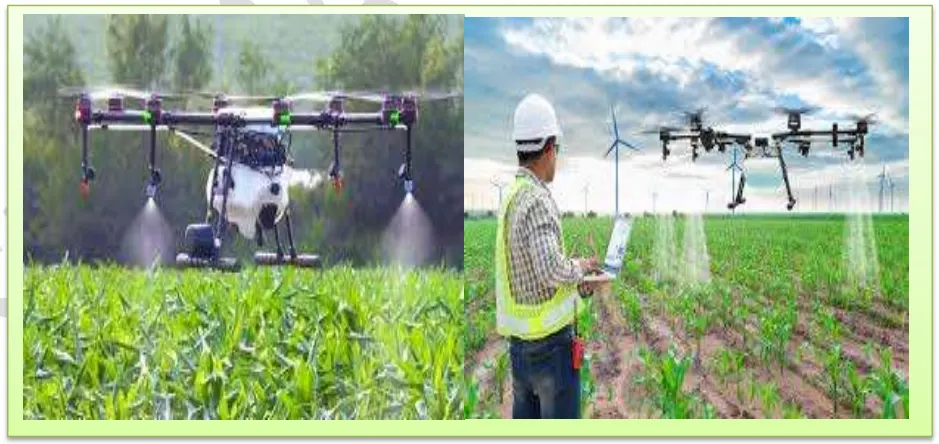
c) Artificial Intelligence (AI) and Machine Learning
Crop disease prediction and management: AI can be used to analyze images of crops and detect early signs of diseases or pests.Automation of farming tasks: AI-powered robots can automate tasks such as planting, weeding, and harvesting, making farming more efficient.
d) Farm Management Software
Farm management systems (FMS) use computer science to streamline operations, track inventory, manage finances, and optimize resources. These systems help farmers improve productivity and reduce waste.
e) Genetic Engineering and Biotechnology
Computer science aids in genetic research for developing disease-resistant and high-yield crops through simulations, data modeling, and genome sequencing. In agriculture, computer science offers innovative technologies that optimize farming practices, improve crop yields, reduce environmental impact, and support sustainable agriculture through data-driven insights, automation, and precision tools.
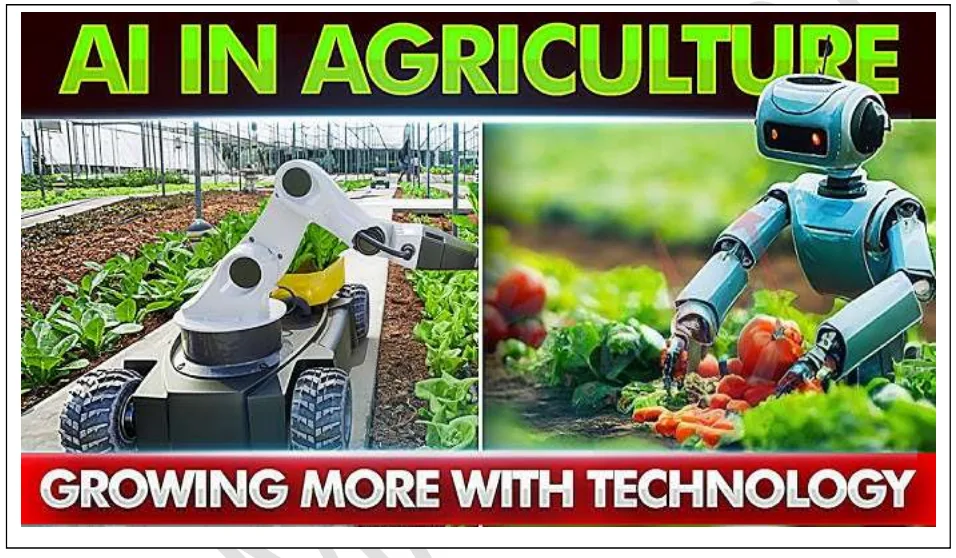
RELATIONSHIP BETWEEN THE FOLLOWING TEM AS USED
a) computer science (CS)
b) information technology (IT)
c) information and communication technology (ICT)
d) information system (IS)
The fields of Computer Science (CS), Information Technology (IT), Information and Communication Technology (ICT), and Information Systems (IS) are closely related but differ in their focus and scope. Here’s a breakdown of how they are interconnected:
1. Computer Science (CS) is the theoretical foundation of computing, focusing on algorithms, programming languages, software development, computational theory, artificial intelligence, and data structures. It provides the technical knowledge needed to develop the software and systems that are used in IT, ICT, and information systems.
2. Information Technology (IT) is the practical application of computers, software, networks, and systems to manage and process information. It focuses on the infrastructure, tools, and hardware that help businesses and individuals store, retrieve, and process data. IT uses principles from computer science to implement systems and networks to manage data and ensure proper functionality of information systems. It is more focused on the technical aspects and implementation of solutions.
3. Information and Communication Technology (ICT) is a broader term that includes information technology (hardware and software) as well as telecommunications and other technologies that facilitate communication (e.g., internet, broadcasting, satellite systems). ICT is an integration of IT and communication technologies, aiming to enable efficient communication and exchange of information. While IT focuses on managing data, ICT extends that to include communication and networking technologies.
4. Information Systems (IS) focus on the design, development, and management of systems that collect, process, store, and disseminate information. This includes both technical infrastructure and organizational aspects such as user interaction, business processes, and decision-making. Information systems are built using IT and ICT technologies, and the processes are often influenced by concepts from computer science. An IS integrates people, processes, and technology to support organizational goals and decision-making.
Relationship Overview:
1. Computer Science is the foundation of the technology behind all of the fields.
2. Information Technology applies the principles of computer science to create and manage the hardware and software systems for data processing and storage.
3. Information and Communication Technology is an extension of IT, adding communication technologies like the internet, broadcasting, and other networks.
4. Information Systems are a combination of people, processes, and technologies (including IT and ICT) that are used to process and manage data and support business operations and decision-making.
In short, Computer Science is the academic discipline that underpins IT, ICT, and IS, while IT and ICT provide the tools and infrastructure to create and manage information systems, which are used to facilitate communication, decisionmaking, and business processes.


